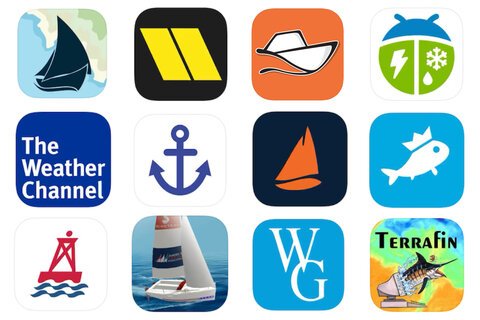Marine Internet & Communication Basics at Sea
Connectivity on the water is no longer a luxury, it’s a necessity for everyone who works remotely, needs to check in with family or just wants to surf the net for answers or weather information. So how do you bring the Internet aboard? There are three main options and depending on the size and complexity of your vessel as well as where you boat, one will be right for you. 
1. Land-based WiFi
For inland or near-shore boating, the easiest way to connect is to tap into land-based WiFi in marinas, restaurants or hotels. The signal is often weak and the network may be overloaded so you’ll need a range extender or a WiFi booster. There are several brands available at various price points and once you have it installed, use it to send signal to your onboard wireless router that multiple people can tether to. A good booster may be able to amplify signal from up to five miles away but it helps if there’s a clear line of sight to the source. If a café has Internet that you connected to while there, you’ll know the password and can use your range extender to connect to it while on the boat.
2. Cellular Hotspot
This is an easy and inexpensive way to bring data aboard. If your cell provider offers coverage in a specific area (including near-coastal), you can use your cell phone to hotspot other devices like onboard laptops or tablets. You can also purchase a separate inexpensive WiFi hotspot device rather than using your phone for this type of tethering.
One issue with either a phone or a hotspot device is that you’ll need coverage from the specific carrier in the area. For example, if ATT has coverage in the area but Sprint doesn’t and your device uses Sprint, you won’t have service. Make sure you have enough data available on your plan because surfing and large file downloads are data hungry and can get expensive quickly. Unlimited data (or carrier mirroring plans that offer the same voice/text/data setup as you enjoy at home) will help.
The quality of your network will depend on the type of signal that’s available. High capacity 5G speeds are wonderful but hard to come by in remote areas where LTE may be the only option.
3. Satellite Internet
Offshore, where cellular service isn’t available and no kind of range extender will work, is where you’ll need Internet delivered via satellite. These are complex and expensive systems with pricey data plans that are usually found on large boats.
Satellite Internet requires a specific (domed) antenna because a boat is a platform in motion and it’s difficult to capture and retain a signal with any kind of reliability. Also, wind, rain and fog can interfere with the signal making it difficult to stay connected for any length of time. A more affordable option would be to buy (or rent) a satellite phone and use it as an onboard hotspot. Be sure to check the carrier’s data plans which may be data capped.
The good news is that onboard connectivity is becoming more of a standard than a luxury and there are multiple ways to deliver it. The not-so-good news is that bringing broadband Internet onto a boat is still challenging and in the end, you may want to grab your phone, tablet or laptop and head in for a coffee and a hotspot on land.

